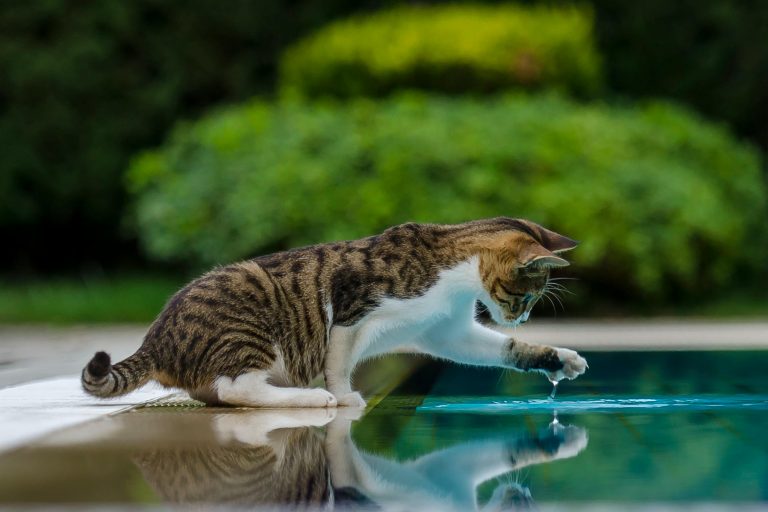Why Pool Water Circulation is Key to Healthy Water: A Guide for Pool Owners in Singapore

Table of Contents
- Introduction: What is Pool Water Circulation?
- Why is Pool Water Circulation Important?
- How Pool Circulation Affects Water Quality
- Common Pool Circulation Issues and How to Fix Them
- How to Improve Your Pool’s Circulation
- Pool Maintenance Tips for Singapore’s Climate
- FAQ: Pool Water Circulation
- Conclusion: Keep Your Pool Healthy with Proper Circulation
1. Introduction: What is Pool Water Circulation?
Pool water circulation refers to the movement of water through the pool’s filtration system. This system includes the pool pump, skimmers, return jets, and filters, all working together to ensure that the water flows smoothly, allowing debris to be removed and water chemistry to stay balanced.
Without proper circulation, stagnant water can lead to a range of issues, including dirty water, algae growth, and a higher risk of contamination. It’s essential for keeping the pool clean and the water healthy for swimming.
2. Why is Pool Water Circulation Important?
Good circulation plays a pivotal role in keeping pool water healthy, ensuring that debris and contaminants are filtered out efficiently. Here are several reasons why water circulation is so critical:
- Even Distribution of Chemicals: Proper circulation helps to evenly distribute pool chemicals (such as chlorine or algaecides) throughout the water. This ensures that all parts of the pool receive the necessary treatment, preventing algae blooms or imbalances in water chemistry.
- Prevents Stagnation: Stagnant water can lead to the growth of bacteria, algae, and harmful pathogens. When water circulates, it helps to prevent these contaminants from settling in the pool.
- Improves Filtration: The water filtration system relies on circulation to bring debris into the filter. Without proper circulation, the filtration system becomes less effective, and debris can accumulate in the pool.
- Keeps Water Clear: Circulation helps to keep the water clear by preventing debris from sinking to the bottom. It also promotes better water clarity by keeping particles suspended, so they can be removed more efficiently by the filter.
3. How Pool Circulation Affects Water Quality
1. Clears Debris and Leaves
Debris from trees, plants, and environmental pollution is common in Singapore’s outdoor pools, especially during the rainy season. When circulation is functioning well, debris is kept in motion and can be easily filtered out, preventing it from staining the pool surface or contributing to algae growth.
2. Prevents Algae Growth
Inadequate circulation encourages algae spores to settle, leading to potential algae blooms. Pools in tropical climates like Singapore are particularly susceptible to algae growth due to the high temperatures and humidity. Regular circulation prevents this by ensuring that water chemicals, including chlorine, reach all areas of the pool to kill off algae spores.
3. Maintains Balanced pH and Alkalinity Levels
Proper circulation ensures that your pool chemicals are evenly distributed, keeping the pH, alkalinity, and chlorine levels stable. Inconsistent circulation can lead to localised imbalances, causing cloudy water or a build-up of calcium deposits along the pool walls.
4. Common Pool Circulation Issues and How to Fix Them
Even with regular maintenance, circulation issues can arise. Here are some common problems and how to address them:
1. Clogged Skimmers and Filters
Clogged skimmers or filters can restrict water flow, reducing circulation efficiency. Clean out the skimmers regularly to ensure that they are not blocked with debris. Make sure the pool filter is clean and well-maintained, and replace it when necessary.
2. Pump Malfunction
If the pump is not functioning properly, water circulation may be compromised. Listen for any unusual sounds coming from the pump, and if it’s not working at full capacity, it may be time to replace or repair it.
3. Blocked Return Jets
Sometimes, the return jets that release water back into the pool can become clogged. Make sure the jets are clear and functioning properly, as this will improve the flow of water throughout the pool.
4. Improper Pool Pump Timer Settings
If your pool pump is not running for long enough, it may not be circulating water effectively. In Singapore’s warm climate, it’s important to run your pool pump for at least 8-10 hours a day to ensure optimal circulation.
5. How to Improve Your Pool’s Circulation
Here are some simple steps to optimise pool water circulation:
1. Adjust Pump Speed
Consider installing a variable-speed pump to adjust the speed according to your pool’s needs. Lower speeds are ideal for filtration, while higher speeds are more effective for circulating water.
2. Use the Right Pool Equipment
Ensure that your pool equipment is the right fit for your pool size and type. Investing in quality pumps, filters, and skimmers ensures better circulation and more effective water management.
3. Check Water Levels
Keep your pool’s water level at the optimal height, as low water levels can reduce the efficiency of the pump. Make sure the water level is at the centre of the skimmer opening for optimal suction.
4. Regularly Clean and Maintain Your Equipment
Regular maintenance of your pool’s pump, filters, and skimmers ensures that they are working at their best. Clean filters, clear debris from skimmers, and check the pump for any signs of wear and tear.
6. Pool Maintenance Tips for Singapore’s Climate
In Singapore’s tropical climate, pool owners face unique challenges with water circulation. Here are some additional tips to keep your pool in top shape:
- Skim Daily: Due to Singapore’s frequent rainfall and high humidity, debris can accumulate rapidly. Skim the pool daily to remove leaves, insects, and other particles before they settle at the bottom.
- Shock the Pool Regularly: High temperatures and humidity can cause pool water to warm up, which can encourage bacterial growth. Shocking the pool regularly will help maintain healthy water.
- Use Pool Covers: Consider using a pool cover when the pool is not in use. This will not only help keep debris out but will also reduce the workload on your circulation system.
7. FAQ: Pool Water Circulation
Q1: How can I tell if my pool’s circulation system is working properly?
You can tell by checking the flow rate at the skimmer, the operation of the pump, and ensuring that the return jets are releasing water. If the flow seems weak, there may be an issue with the pump, filter, or plumbing.
Q2: How often should I run my pool pump?
It’s recommended to run your pool pump for 8-10 hours per day in Singapore’s warm climate to ensure proper circulation and filtration.
Q3: What are the signs of poor pool circulation?
Cloudy water, algae growth, and debris accumulation at the bottom of the pool are all signs that your pool’s circulation system may need attention.
Q4: Can poor circulation cause pool damage?
Yes, poor circulation can lead to algae blooms, dirt accumulation, and water chemistry imbalances, which can damage the pool surface and make it unsafe for swimmers.
8. Conclusion: Keep Your Pool Healthy with Proper Circulation
Maintaining proper water circulation is crucial for ensuring a healthy pool in Singapore’s tropical climate. With consistent circulation, you can prevent algae growth, ensure even chemical distribution, and keep the pool water clear and inviting. By following the tips outlined in this guide, you’ll be able to maintain a cleaner, healthier pool for both leisure and safety.
For more information on swimming pool maintenance in Singapore, visit our Swimming Pool Maintenance Guide. Keep your pool in top condition with effective water circulation!
